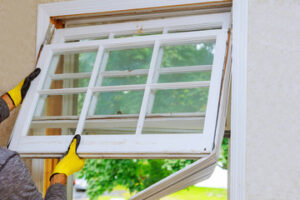Studies have shown that people feel happier and more positive about their environments when surrounded by green grass, beautiful flowers, and delightful scents. A well-designed landscape also provides a host of other benefits, including an increase in cognitive function.

There are three main concepts in landscape design: order, sequence, and focalization. The former involves using repetition in a design to create uniformity and harmony. The latter includes creating smooth transitions in size, shape, and texture. Reach out to Florence Landscaping for expert assistance.
Landscape design doesn’t just involve beautiful flowers and perfectly green turf, but it can also increase the value of a property and create a more positive experience for visitors. Commercial landscapes, for example, can play a big role in attracting tenants and increasing a company’s brand image.
A landscape’s beauty is the result of many elements, including contrast, color, and texture. The contrasting colors of a flower bed, for instance, can draw the eye and create visual balance while the juxtaposition of different textures—coarse and fine—can make certain areas look more prominent than others.
Another important consideration in the design process is proportion. A good rule of thumb is to have the height of a vertical element be one-third as long as its width. This helps to achieve a sense of enclosure and openness simultaneously.
Considering the location and local architecture is also helpful when planning a landscaping project. A city with ancient cathedrals and a storied history may require a more traditional approach to landscaping than a modern college town, for example.
Functionality is another major consideration in landscape design, and this can include a variety of things from zoning and practical use to accessibility. Zoning, for example, can divide a landscape into distinct areas with specific purposes like entertaining, gardening, and relaxation. This can help to guide the placement of outdoor features like patios, decks, and seating areas. Providing access to these areas for all users, including those with disabilities, is also an important part of the functional design process.
The choice of materials is an important part of a landscape’s overall aesthetic, and sustainable landscaping practices are increasingly common. Choosing eco-friendly outdoor materials can mitigate the need for new raw materials and help to reduce landfill waste. Other sustainable practices can include the use of recycled wood and plastic, rainwater harvesting, and native plants.
Lastly, encouraging community stewardship is an important aspect of sustainable landscaping. This can be done through programs like zero-litter initiatives, cleanup volunteers, and offering food and shelter for wildlife on private residences. By doing so, we can ensure that our landscapes are healthy and thriving for generations to come.
Planting
Plants are an essential part of any landscape, and they can have a profound impact on the aesthetics of a property. Whether the goal is to create a lush, tropical retreat or a modern, functional space, thoughtful selection and placement can enhance any outdoor environment.
The planting of a landscape can be broken down into three categories: hardscapes, softscapes, and water features. Hardscapes include non-living elements like rocks and paving materials, while softscapes refer to plants and trees. Adding water features to the mix can add movement and sound, as well as further increase the visual appeal of the landscape.
Landscapes are typically arranged in “rooms,” or distinct areas, with each room containing different plants, flowers, and structures. Contrasting shapes, sizes, and textures, as well as color, are used to highlight these areas and create a sense of unity and harmony. The use of color is especially important in landscapes, as it can be used to create a warm or cool palette or to emphasize specific plants within the landscape.
When deciding on the placement of plants, it is important to consider their growth habits and flowering periods. This will help ensure that the plants will be able to grow and flourish in their new home. It is also important to consider the surrounding architecture, climate, and other factors when choosing plants. For example, plants that are native to the area tend to have a stronger resistance to pests and diseases than those imported from other parts of the world.
Landscaping can be very complex and requires a lot of planning. A good plan should have a clear vision of the desired outcome, and should be executed using a consistent theme throughout the design. This can be achieved by utilizing repetition of objects, such as plant varieties, paving stones, and garden ornaments. By creating unity through repetition, the overall look of the landscaping will be more cohesive and attractive.
Landscaping is a popular way to beautify homes and businesses, and can also provide many functional benefits, such as increasing the value of the property or improving its overall appearance. Landscaping can be performed on a residential or commercial property, and can include both hardscape and softscape elements. The process can involve a variety of techniques, from planning and planting to maintenance and management.
Maintenance
Landscaping can involve a wide variety of services, including garden design and installation, tree pruning, water features, walkways, paving stones, driveways and patios. The goal is to create an outdoor space that balances the visual appeal of plants and structures with a comfortable, usable area for entertaining and relaxing. Landscape services must take into consideration the property’s size, terrain and climate. They must also factor in environmental, aesthetic and budgetary concerns.
The most profitable landscaping services are those that meet a client’s specific needs. For example, a business that offers commercial office plantscaping is able to provide clients with a wide range of plant species, including exotic and native varieties. In addition, these professionals can help their clients choose the right plants for each setting. This way, businesses can maximize the impact of their investments while minimizing maintenance costs.
Landscape services can include anything from installing a simple walkway to building a complex water feature. Some services may require more than one professional, depending on the scope of the project. For instance, a large garden might require both an interior designer and an exterior landscaper to create the desired effect. Choosing the right contractor will ensure that the job is done correctly and within budget.
While landscaping is the initial activity that transforms a piece of land, landscape maintenance is the ongoing effort to preserve that land. It involves the strategic positioning of trees, flowers and grass, but it focuses more on keeping the environment healthy than changing it. Landscape maintenance includes activities like fertilization, mulching and mowing. It can also involve tree trimming, pest management and water conservation.
When does landscaping become considered construction? It’s when the land is altered by adding retaining walls, patios or building structures. It can also be when the ground is graded to make it more functional or adds drainage systems. Landscapers are able to perform these tasks because they have the knowledge and experience to do so safely and effectively.
A landscaping business that specializes in residential gardens can help their clients design and implement a unique outdoor space. They can even provide stonework for retaining walls, paved surfaces and steps, as well as outdoor lighting and furnishings. This company can transform an ordinary yard into a garden oasis that will impress family and friends.
Lighting
A well-lit landscape creates a dramatic nighttime ambiance that elevates the beauty of your property. However, there are a few important considerations to make regarding the lighting of your landscape.
First and foremost, what atmosphere are you trying to achieve? This fundamental question shapes all of the decisions that follow, from light types and intensities to fixture placement. Aiming for a soft ambient glow bathes your space in a delicate radiance, while brighter illumination accentuates focal points and creates drama.
There are many different landscape lighting styles that can illuminate your property, but the style should match your overall design goals. Path lights should guide without overpowering, while spotlights accentuate focal points and well lights discreetly highlight architectural features. The specific fixture type will also dictate the desired outcome, with options like grazing illuminating textured surfaces and wall washing eliminating shadows on large areas.
The wattage of your landscape lighting is also vital to consider. If your lights are overpowered, they’ll produce an ugly glare that’s unattractive and uncomfortable. Choosing fixtures that have adjustable lumen output allows you to fine-tune the brightness of individual elements.
Once your lighting is installed, it’s important to remember that maintenance is just as critical as the initial installation. Performing routine inspections helps ensure that your system works properly and isn’t susceptible to damage or failure. Identifying issues early on, such as frayed wires and circuit breaker trips, can prevent costly repairs and ensure that your outdoor lighting continues to function at peak performance.
One of the most common problems that we see in landscape lighting is when a portion of the property remains dark when others are lit. This can result from improper design or an inconsistent lighting scheme. Using an experienced landscape lighting professional can help you avoid this issue by designing a plan that will evenly illuminate your property.
It’s also essential to choose durable materials for your landscape lighting fixtures. Metals such as brass and copper are known for their resilience against the outdoor elements. This durability will allow your lights to stand up to wear and tear, increasing their longevity and contributing to the aesthetics of your landscape. It’s also a good idea to choose fixtures with adjustable beam spread, as this allows you to control the amount of light directed toward a specific element.








